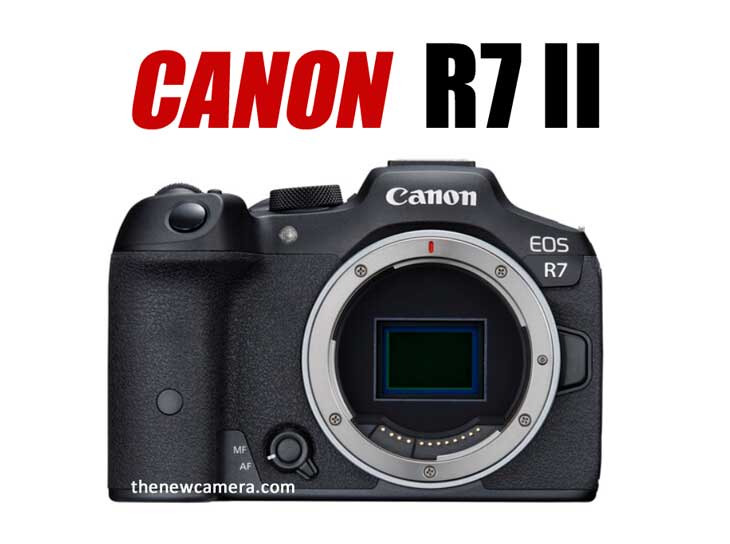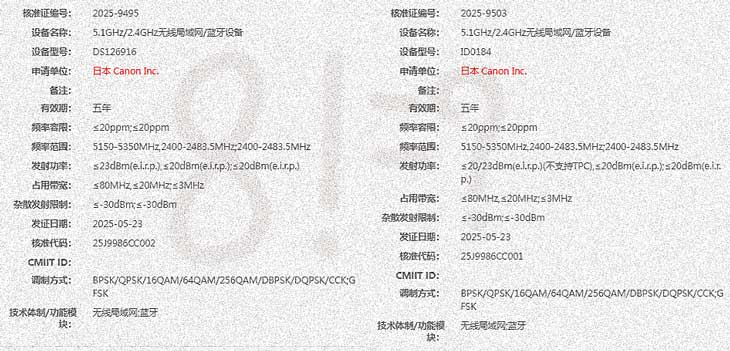
According to the latest news on the web via rumor mills, the Canon R7 Mark II camera is coming without a mechanical shutter. The successor to the Canon R7 camera will arrive in Q4 of 2025. Canon R7 series is always called as trend setter of the prosumer market, it always sets a new standard in terms of performance, usability, and practicality
A Shutterless Future for Canon APS-C Cameras?
See, the idea of ditching the mechanical shutter is not entirely new. If you have been following, then Nikon made headlines years ago by dropping the mechanical shutter in the Nikon Z8 and the Nikon Z9 camera. It did raise the eyebrows of professional photographers—those who have been using mechanical shutters for ages— but none of them have any performance quality issues.
A mechanical shutter is required when your sensor readout speed is slow. Typically, all the traditional non-stacked CMOS sensors had slow readout speed, and with the help of a mechanical shutter, the traditional readout speed gets overridden; hence, the mechanical shutter was a very essential thing, till the stacked CMOS sensors arrived in the mirrorless game.
Do Stacked CMOS Sensors Need a Mechanical Shutter?
Now, with the faster readout speed, new age sensors, technically, the stacked CMOS sensors don’t need a mechanical shutter. With faster readout speeds, these sensors minimize rolling shutter distortion, which was a key limitation of electronic shutters in the past. For example, the latest Nikon cameras, the Z8 and Z9, feature stacked CMOS sensors with a readout speed of approximately 3.73ms (1/268 second) for full-resolution RAW stills, among the fastest for HIGH RES. full-frame cameras. This speed significantly reduces rolling shutter artefacts, making mechanical shutters largely redundant for most shooting scenarios.
The Sony Alpha 9 III takes this further with its full-frame global shutter sensor, which captures all pixels simultaneously, effectively eliminating rolling shutter distortion (rendering traditional readout speed measurements irrelevant). This allows distortion-free capture at 120fps for stills and in high-speed video modes like 4K/120p, without the need for a mechanical shutter.
Mechanical shutters are no longer critical for exposure control in these cameras; they still have some use, however, and can serve a secondary purpose: protecting the sensor from dust and debris when the camera is powered off or during lens changes. For example, the Nikon Z8 and Z9 incorporate a sensor shield that closes when the camera is off, addressing this concern without requiring a traditional mechanical shutter.
List of Shutterless Mirrorless Cameras 2025
| Brand | Model | Sensor | Resolution | Burst Rate (Electronic Shutter) | Release Status |
| Nikon | Z9 | Full-Frame Stacked CMOS | 45.7MP | 20fps (RAW), 120fps (11MP JPEG) | Released (2021) |
| Nikon | Z8 | Full-Frame Stacked CMOS | 45.7MP | 20fps (RAW), 120fps (11MP JPEG) | Released (2023) |
| Sony | Alpha 9 III | Full-Frame Global Shutter CMOS | 24.6MP | 120fps | Released (2023) |
| Canon | EOS R7 Mark II (Rumored) | APS-C Stacked BSI CMOS | 32.5MP (Speculated) | 40fps (Speculated) | Expected Q3/Q4 2025 |
Take a look at the updated list of Canon R7 Mark II expected core specifications below
Canon R7 Mark II Specification [Expectations ]
- 32.5MP Stacked APS-C CMOS Sensor
- Dual Pixel CMOS AF II
- 4K 120p 10-Bit Video, HDR-PQ & C-Log 3
- External 6K ProRes RAW Recording
- 40 fps E. Shutter,
15 fps Mech. Shutter - Sensor-Shift 5-Axis Image Stabilization
- 3.69 m-Dot OLED EVF
- 1.6m-Dot Vari-Angle Touchscreen LCD
- Sensor-Shift 5-Axis Image Stabilization
- Dual UHS-II Memory Card Slots
- Multi-Function Shoe, Wi-Fi and Bluetooth
Our Take
Mechanical shutters are expensive to produce, add complexity to camera bodies, and have a finite lifespan due to their moving parts. By going fully electronic, Canon could streamline production and potentially pass savings on to consumers. While using a STACKED CMOS sensor, Electronic shutters can also offer distinct advantages without worrying about the rolling shutter issue. Some Advantages include silent operation, faster burst rates, and higher shutter speeds (up to 1/16,000 sec on the current R7). It’s a welcome and very innovative step by Canon if the information is true.
What do you think about a shutterless R7 Mark II? Would you embrace the change, or do you prefer the reliability of a mechanical shutter? Let us know in the comments below!
Stay Updated with TheNewCamera.com
At TheNewCamera.com, we’re dedicated to keeping you informed about the latest camera news. The article “Canon R7 Mark II Coming without Mechanical Shutter” was published on 8:40 am, Thursday, 12 June 2025, Greenwich Mean Time (GMT) by thenewcamera.com team | Follow us on our social pages FACEBOOK | TWITTER | INSTAGRAM to get live Camera News + Canon Rumors 24X7.
source credit of the news canonrumor.com
Canon Registers Two New Cameras May 2025 Update
When Are Third-Party Lenses Coming for Canon RF Full-Frame Mount?









